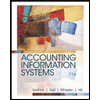
Dollar-Value-LIFO: This method shows all the inventory figures at dollar price rather than units. Under this inventory method, the units that are purchased last, are sold first. Thus, it starts from the selling of the units recently purchased and ending with the beginning inventory.
To Determine: the cost-to-retail percentage for the inventory on hand at 1/1/2018.
Explanation of Solution
Determine the cost-to-retail percentage for the inventory on hand at 1/1/2018.
Conclusion:
Therefore, the cost-to-retail percentage for the inventory on hand at 1/1/2018 is 75%.
To Determine: the cost-to-retail percentage for the inventory on hand at 12/31/2018.
Solution:
Determine the cost-to-retail percentage for the inventory on hand at 12/31/2018.
Working notes:
Calculate the amount of ending inventory at base year retail prices.
Calculate the amount of inventory layers at base year retail prices.
Calculate the amount of inventory layers at current year retail prices.
Calculate the amount of inventory layers converted to cost (Base).
Calculate the amount of inventory layers added at current year retail (2018).
Calculate the amount of inventory layers added at current year cost (2018).
Conclusion:
Therefore, the cost-to-retail percentage for the inventory on hand at 12/31/2018 is 80%.
To Determine: the ending inventory for 2019.
Solution:
Calculate the amount of estimated ending inventory for 2019.
| Details | Cost ($) | Retail ($) |
| Beginning inventory | 22,792 | 33,600 |
| Add: Net purchases | 60,000 | 88,400 |
| Goods available for sale – Including beginning inventory | 82,792 | 122,000 |
| Less: Net sales | (80,000) | |
| Estimated ending inventory at current year retail prices | 42,000 | |
| Estimated ending inventory at cost | 26,864 |
Table (1)
Working notes:
Calculate current year layer (2018) cost-to retail percentage.
Calculate the amount of estimated ending inventory at cost.
| Ending inventory at dollar-value LIFO retail cost | ||||
| Step 1 | Step 2 | Step 3 | ||
| Ending inventory at year-end retail prices ($) | Ending inventory at base year retail prices ($) | Inventory layers at base year retail prices ($) | Inventory layers converted to cost ($) | |
| 42,000 (refer Table 1) | 35,000 (9) | 28,000 (Base)(3) | 21,000 (11) | |
| 2,000 (2018)(4) | 1,792 (7) | |||
| 5,000 (2019)(10) | 4,072 (12) | |||
| Total ending inventory at dollar-value LIFO retail cost | $26,864 | |||
Table (2)
Calculate the amount of ending inventory at base year retail prices.
Calculate the amount of inventory layers at current year retail prices.
Calculate the amount of inventory layers converted to cost (Base).
Calculate the amount of inventory layers converted to cost (2019).
Want to see more full solutions like this?
Chapter 9 Solutions
Intermediate Accounting
- Please solve and show work.arrow_forwardSequoia Resorts pays $780,000 plus $17,500 in closing costs to buy out a competitor. The real estate consists of land appraised at $95,000, a building appraised at $342,000, and recreational equipment appraised at $398,000. Compute the cost that should be allocated to the building.arrow_forwardI need help with this solution and general accounting questionarrow_forward
- Cozy Retreats currently sells 420 Standard hot tubs, 580 Luxury hot tubs, and 190 Premium model hot tubs each year. The firm is considering adding a Comfort model hot tub and expects that, if it does, it can sell 340 of them. However, if the new hot tub is added, standard sales are expected to decline to 290 units while Luxury sales are expected to decline to 310. The sales of the Premium model will not be affected. Standard hot tubs sell for an average of $8,900 each. Luxury hot tubs are priced at $14,500 and the Premium model sells for $22,000 each. The new Comfort model will sell for $12,300. What is the value of erosion?arrow_forwardSalma Production uses direct labor cost as the allocation base for applying MOH to WIP. The budgeted direct labor cost for the year was $850,000. The budgeted manufacturing overhead was $722,500. The actual direct labor cost for the year was $910,000. The actual manufacturing overhead was $745,000. A. What was Salma's predetermined manufacturing overhead rate per direct labor dollars? B. How much MOH was applied to WIP during the year?arrow_forwardHello tutor solve this question and accountingarrow_forward
- The total factory overhead for Leicester Manufacturing is budgeted for the year at $756,000. Leicester manufactures two product lines: standard lamps and premium lamps. These products each require 4 direct labor hours to manufacture. Each product is budgeted for 8,000 units of production for the year. Determine the factory overhead allocated per unit for premium lamps using the single plantwide factory overhead rate.arrow_forwardI need help with this solution and accounting questionarrow_forwardhttps://investor.exxonmobil.com/sec-filings/annual-reports/content/0000034088-25-000010/0000034088-25-000010.pdf Use link to help me answer my question please in picturearrow_forward
- Business/Professional Ethics Directors/Executives...AccountingISBN:9781337485913Author:BROOKSPublisher:Cengage
 Accounting Information SystemsFinanceISBN:9781337552127Author:Ulric J. Gelinas, Richard B. Dull, Patrick Wheeler, Mary Callahan HillPublisher:Cengage Learning
Accounting Information SystemsFinanceISBN:9781337552127Author:Ulric J. Gelinas, Richard B. Dull, Patrick Wheeler, Mary Callahan HillPublisher:Cengage Learning


